Art & Exhibitions
Cooper Hewitt Exhibition Shows the Origins of Beloved Pixar Characters
Viewing Pixar's archive is like falling down a rabbit hole.
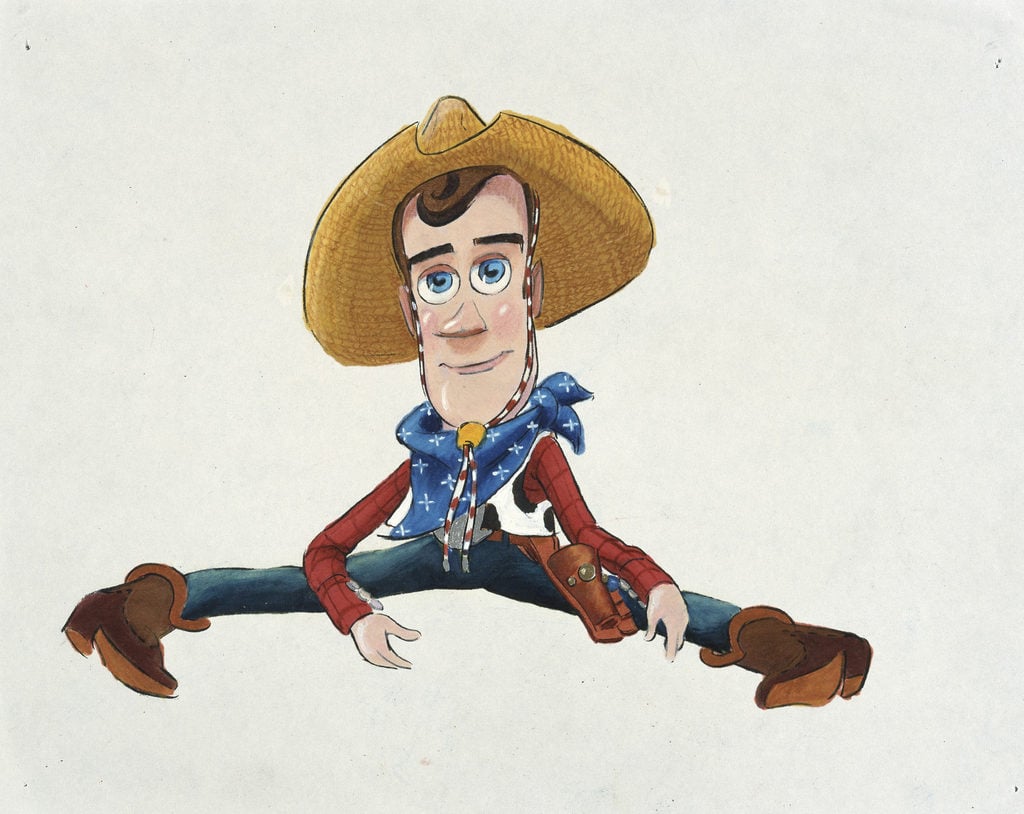
Viewing Pixar's archive is like falling down a rabbit hole.

Sarah Cascone

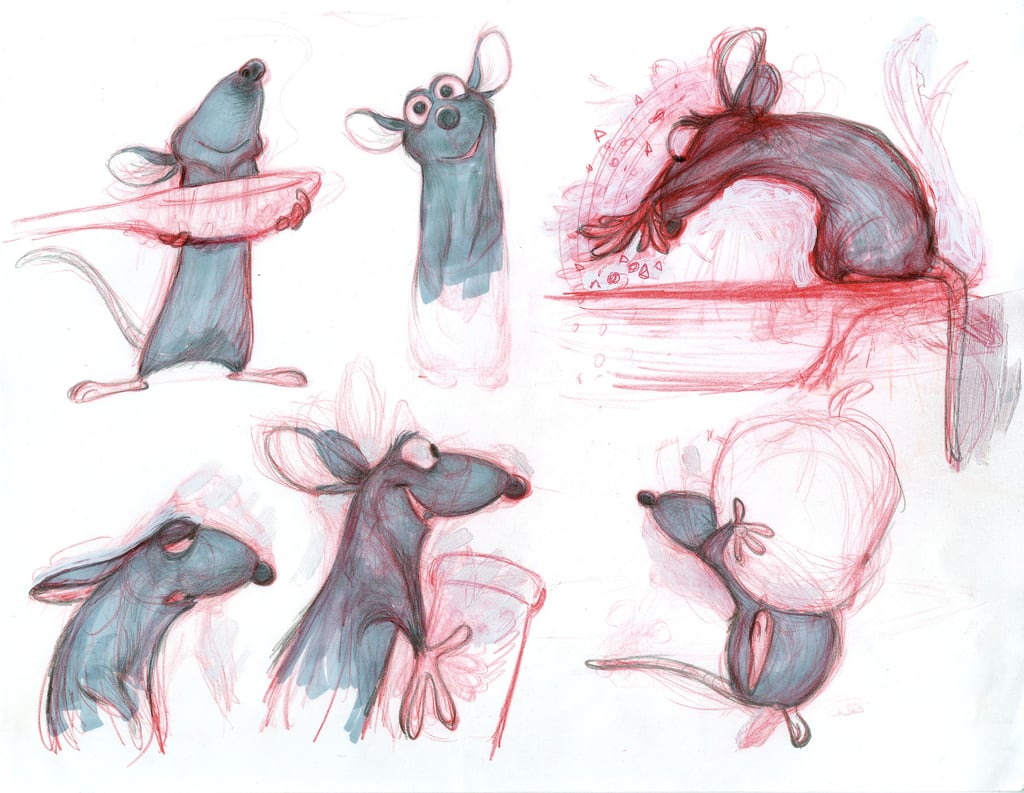
Bolhem Bouchiba, Concept Art, Animation Thumbnails, Ratatouille (2007), pencil, marker, and ink on paper.
Photo: courtesy of Pixar Animation Studios.
“We wanted both Remy and Emile to be very charming and immediately accessible, but we also wanted to emphatically say that they are rats,” Greg Dykstra, a sculptor for 2007’s Ratatouille, is quoted in the humorous wall text for “Pixar: The Design of Story,” a new exhibition at the renovated Cooper Hewitt, Smithsonian Design Museum in New York.
Though a computer animation company may seem a strange choice for an institution dedicated to the art of design, part of the continued success of Pixar’s films is its attention to design details. The exhibition shows the process behind the creation of the studio’s iconic characters and settings—WALL-E’s distinctively grimy metal exterior is explored in 27 color-palette, for instance.
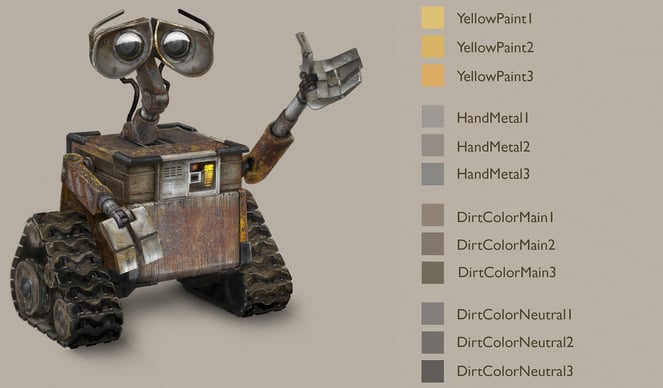
Laura Phillips, Shader Packet, WALL·E (detail), WALL·E (2008), digital painting.
Photo: courtesy of Pixar Animation Studios.
In another inspection, we see that Woody, the lovable hero of Pixar’s first feature film Toy Story (and its two sequels), underwent considerable changes during the design process, evolving from a rather sinister-looking fellow to the friendly face now beloved by children and adults around the world.
This behind the scenes look at Pixar history is irresistible—there’s even a pastel drawing and a storyboard for the original 1986 “Luxo Jr.” short, about a playful young lamp, that started it all.
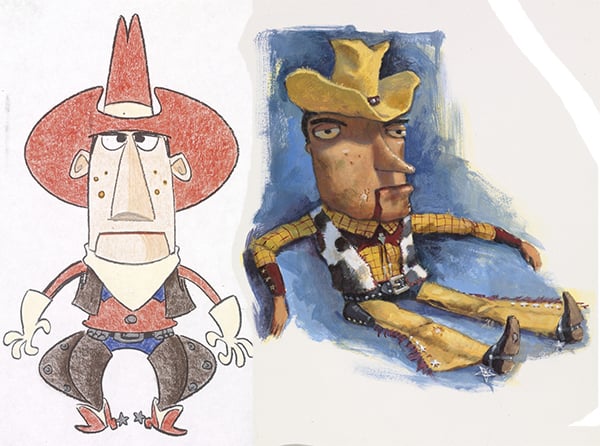
Jeff Pidgeon, left, in pencil and marker, and Steve Johnson and Lou Fancher, right, acrylic on board, Concept Art, Early Woody, Toy Story (1995).
Photo: courtesy of Pixar Animation Studios.
After over 25 years in the movie business, the Pixar’s offsite vault contains millions of objects, from paintings to storyboards. Such a wealth of material was both a blessing and a curse for organizers of the Cooper Hewitt show.
“How do we distill down what we want to say when it’s a design process that’s so comprehensive?” Elyse Klaidman, director of Pixar University, told artnet News in an interview.
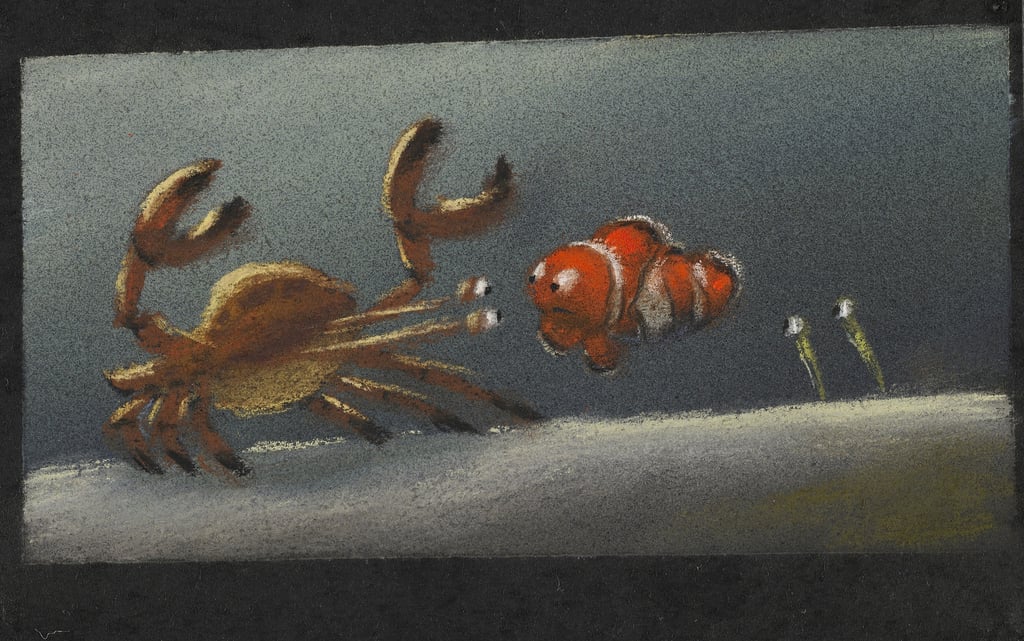
Ralph Eggleston, Sequence Pastel, Near Miss, Finding Nemo (2003), pastel on paper.
Photo: courtesy Pixar Animation Studios.
The curated result focuses on the elements of design that make each Pixar world so believable. While the small Process Lab gallery limits the number of objects that are physically present, some 700 artworks from the archive can be viewed through interactive digital tables using the museum’s magical pen.
Exploring the table can be a bit like falling down a research rabbit hole; the museum attempts to underscore Pixar’s design connection by pairing each Pixar work with numerous objects from Cooper Hewitt’s own collection, which can be a stretch. A mottled brown painting of the grasshopper villain of A Bug’s Life, for instance, is linked to an luminous brown tortoise shell and feather fan, part of the collection since 1903.
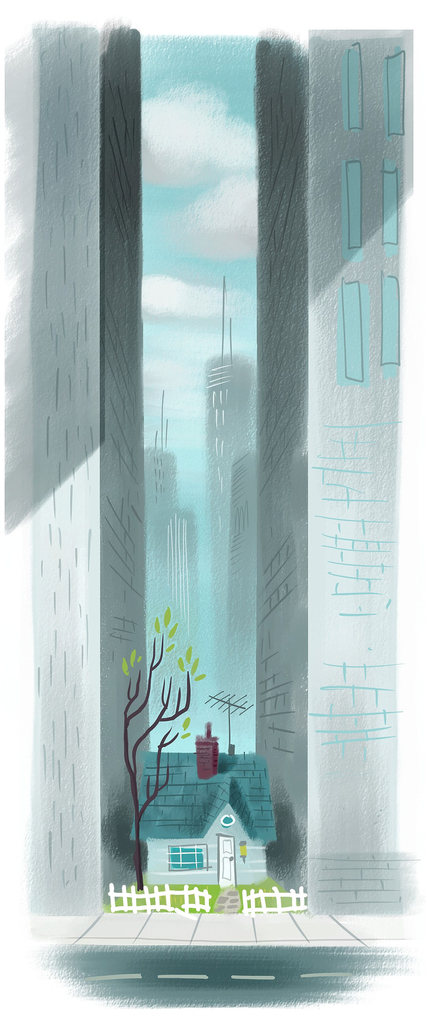
Don Shank, Concept Art, Carl’s House, Up (2009), digital painting.
Photo: courtesy of Pixar Animation Studios.
But a striking example of how this can work is seen in two drawings; one is a mid-century architectural drawing from the museum’s collection, another is a concept piece for The Incredibles. Although the paired works depict different architectural interiors, they are basically interchangeable—which was just what the film’s creators wanted to achieve.
“The watch word for the whole movie was that it should seem like the early-sixties vision of the future,” explained producer John Walker in a quote in the exhibition.
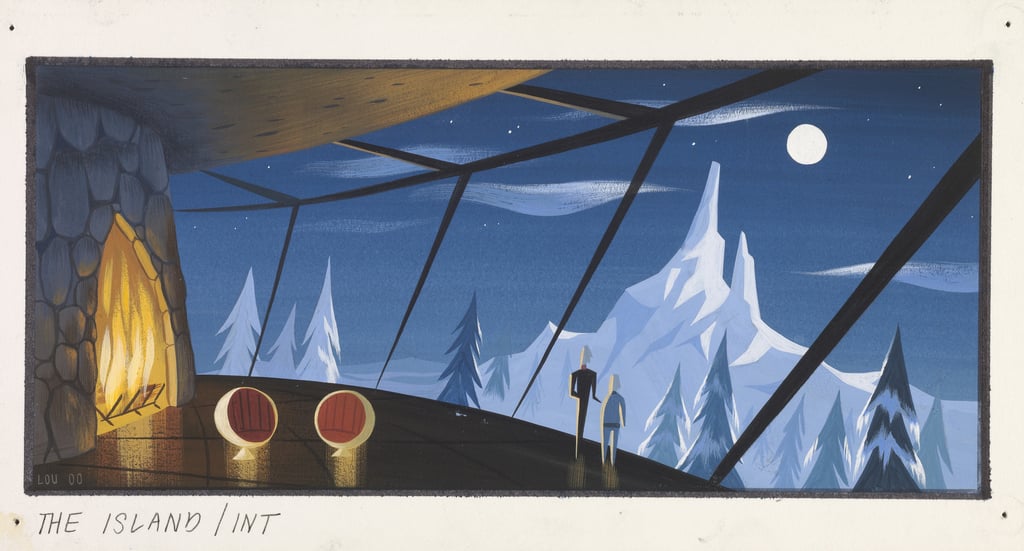
Lou Romano, Concept Art, Syndrome’s Lair, The Incredibles (2004), gouache on board.
Photo: courtesy of Pixar Animation Studios.
Cooper Hewitt’s point is clear: Pixar’s richly imagined worlds, which viewers have come to know intimately, would be utterly lost without thoughtful, informed design.
See more images from the show below.
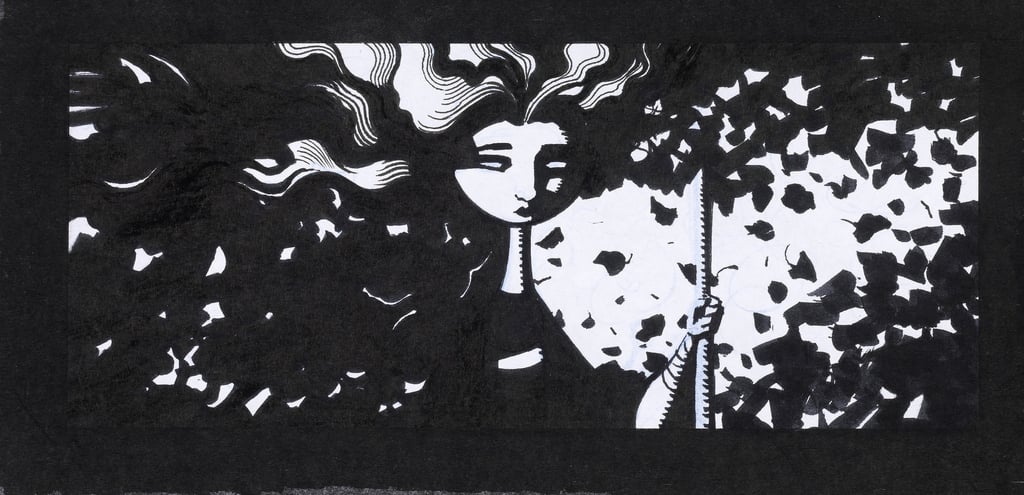
Steve Pilcher, Concept Art, Merida, Brave (2012), ink and pencil on paper.
Photo: courtesy of Pixar Animation Studios.
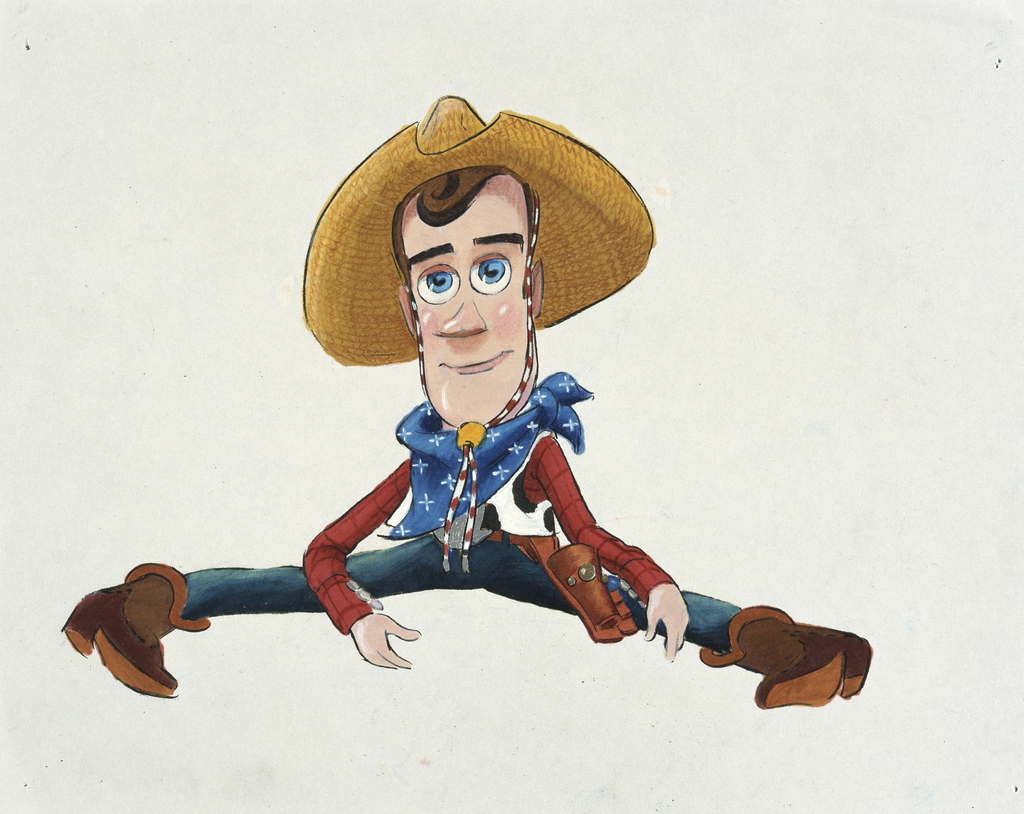
Bud Luckey and Ralph Eggleston, Concept Art, Early Woody, Toy Story (1995), mixed media on paper.
Photo: courtesy of Pixar Animation Studios.

Tia W. Kratter and Jerome Ranft, Concept Art, Sullivan Fur Pattern Studies, Monsters, Inc. (2001), mixed media on board.
Photo: courtesy of Pixar Animation Studios.
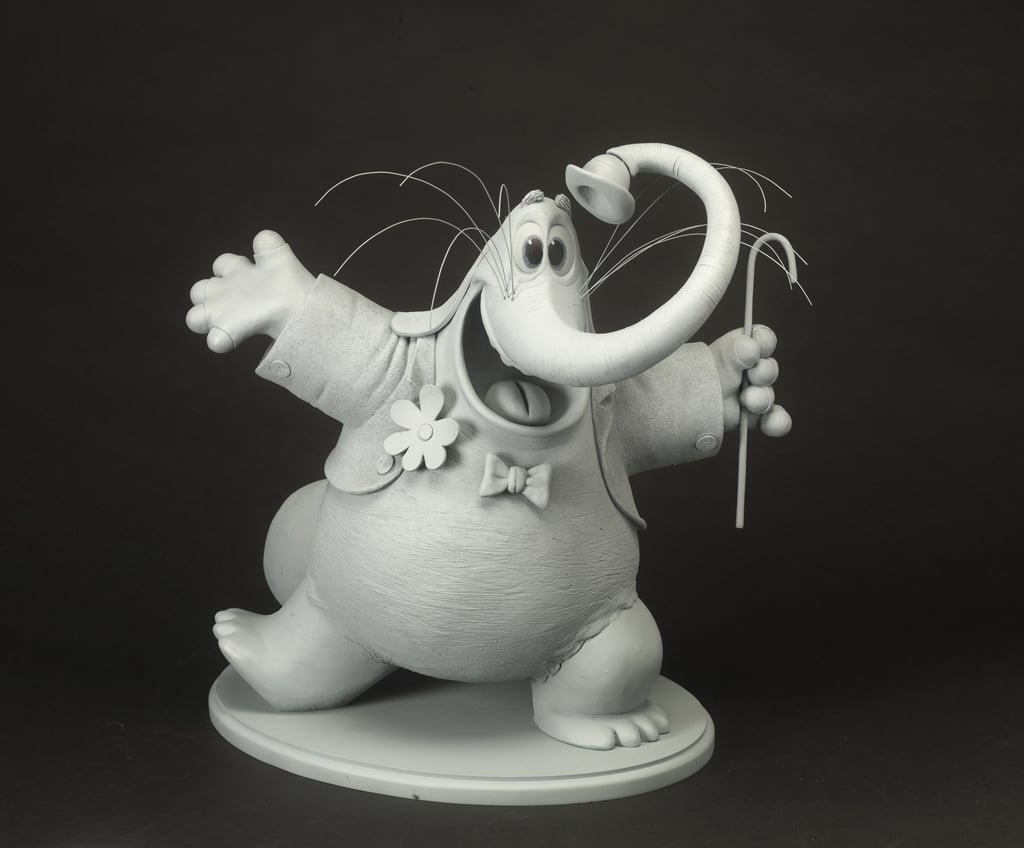
Jerome Ranft, Maquette, Bing Bong, Inside Out (2015), cast urethane resin. Photo: courtesy of Pixar Animation Studios.
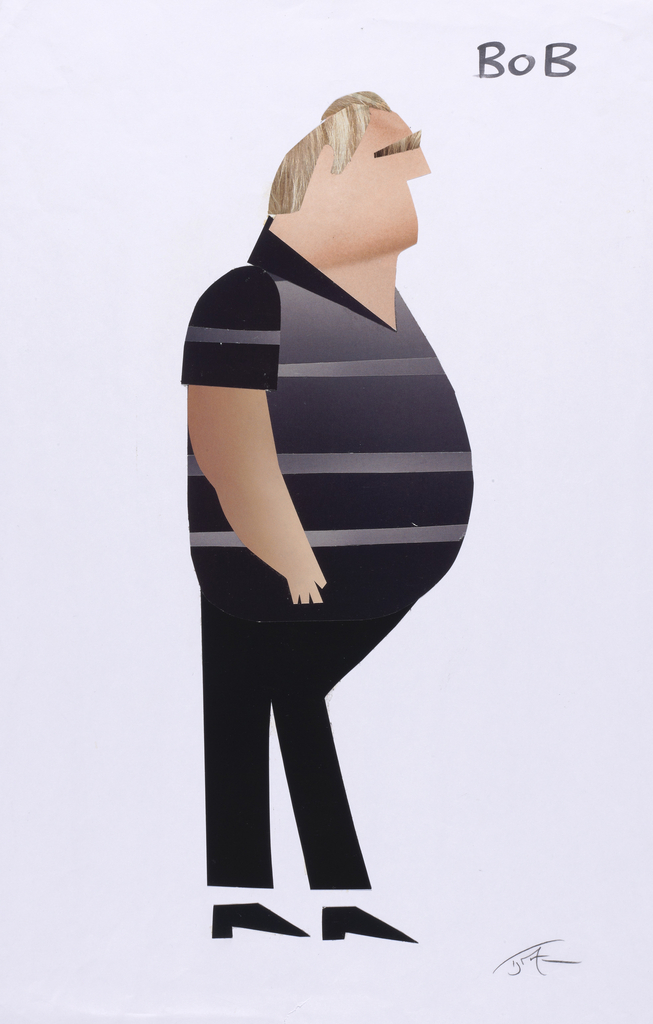
Teddy Newton, Concept Art, Bob, The Incredibles (2004). collage on paper.
Photo: courtesy of Pixar Animation Studios.
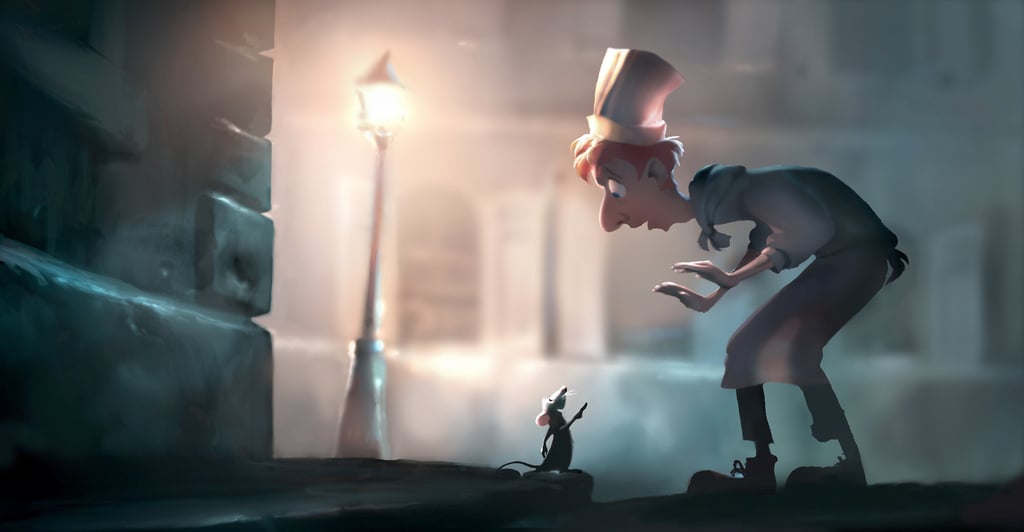
Dominique R. Louis and Robert Kondo, Concept Art, Lighting Study: The Seine, Ratatouille (2007), digital painting.
Photo: courtesy of Pixar Animation Studios.
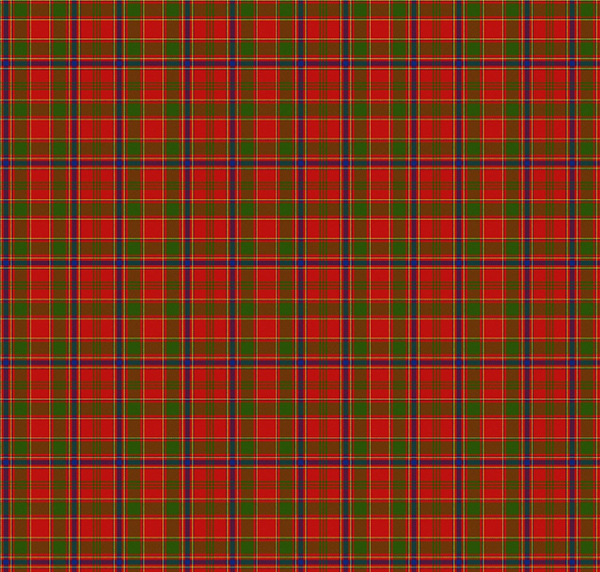
Tia W. Kratter, Concept Art, Macintosh Clan Tartan, Brave (2012), digital painting.
Photo: courtesy of Pixar Animation Studios.

Teddy Newton, Concept Art, Elastigirl, The Incredibles, (2004), marker and pencil on paper.
Photo: courtesy of Pixar Animation Studios.
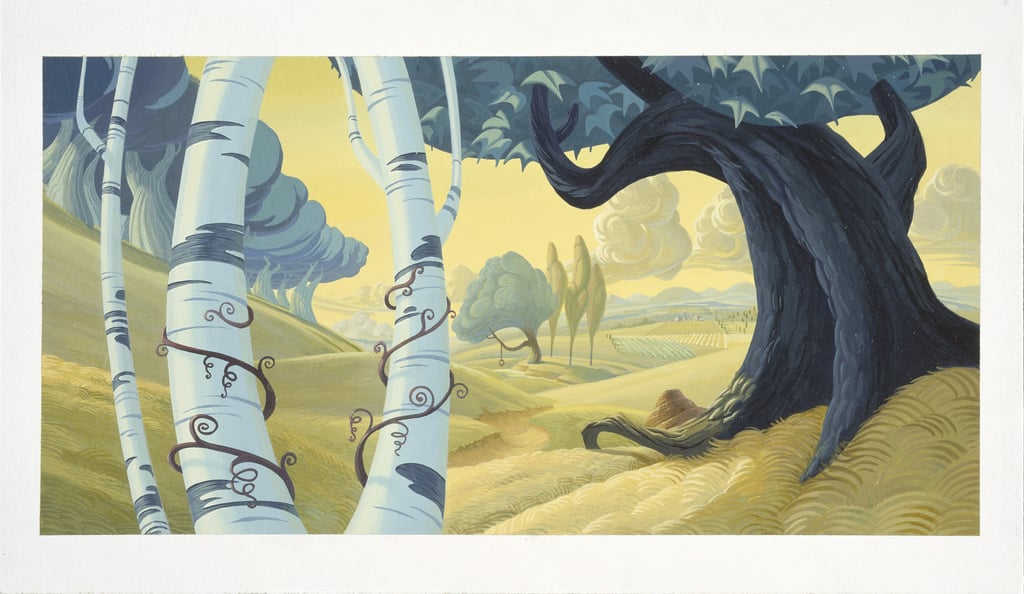
Tia W. Kratter and Geefwee Boedoe, Concept Art, Bug World as Observed by Humans, A Bug’s Life (1998), acrylic on board.
Photo: courtesy Pixar Animation Studios.
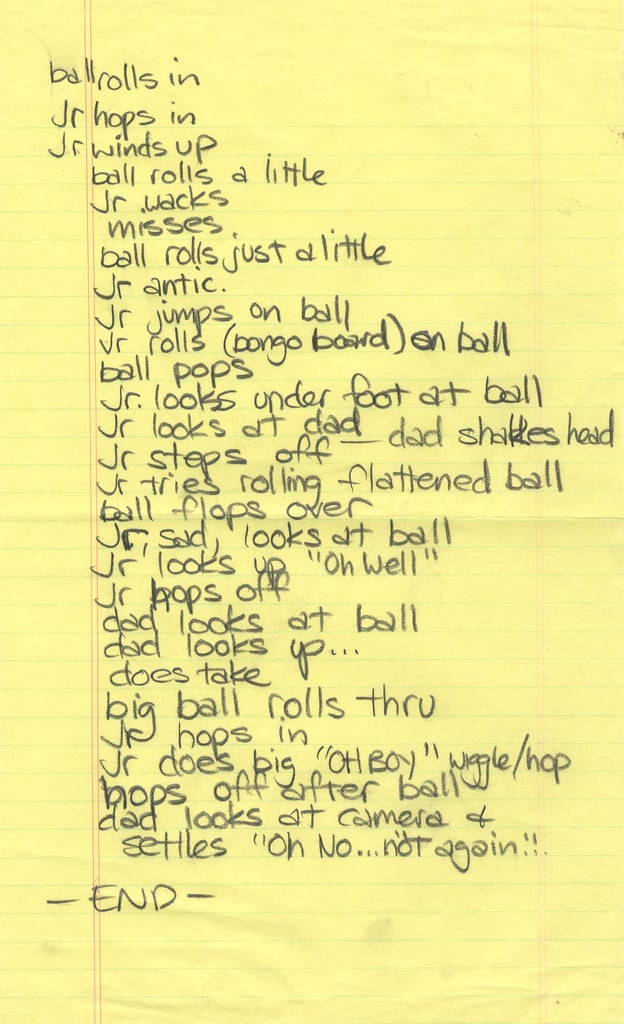
John Lasseter, Storyboards, “Luxo Jr.” (1986), pencil on paper.
Photo: courtesy of Pixar Animation Studios.

Pete Docter, concept Art, Sullivan and Mike, Monsters, Inc. (2001), marker on paper.
Photo: courtesy Pixar Animation Studios.
“Pixar: The Design of the Story” is on view at Cooper Hewitt, Smithsonian Design Museum from October 8, 2015 through August 7, 2016.